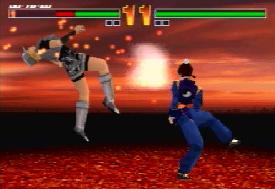Time to meet your maker…
I bet we’ve all said at one time or another, “DAAAAMN. This game sucks. I could
pull a better one outa’ my ass.” Because of this, many of us aspire to one-day
program and create our own games. After all, if you have to be a computer science
major, why not use it for the power of good instead…
-
Innovative idea
-
Average Fight Engine
-
Lack of Power
-
Difficult, time consuming interface
-
Preset Character Images









